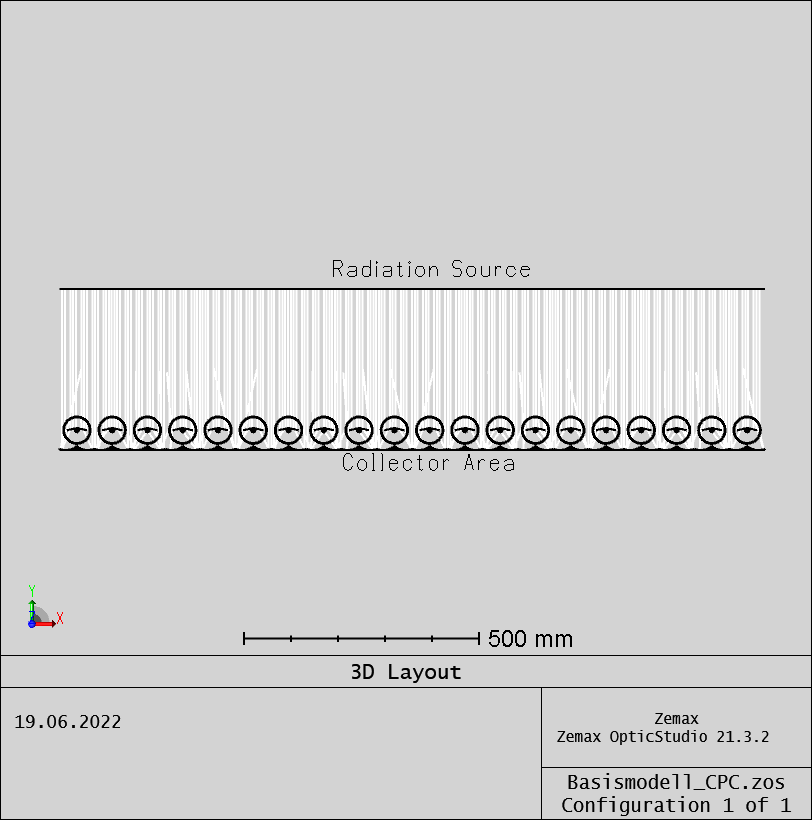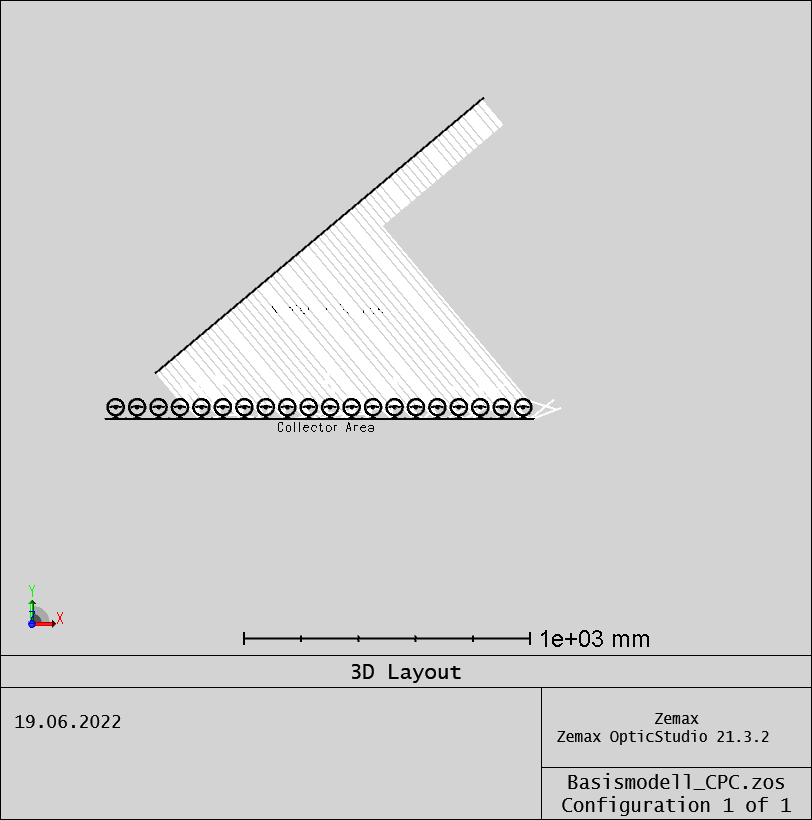Dear all,
I´m currently modelling a solar thermal (evacuated tube) collector in Zemax. The aim is to investigate the collector behavior under different angles of incidence. The collector is in rectangle shape, so I´ve modelled the sun as source rectangle with the same dimensions (see attached image).

I want to make sure, that the irradiation onto the collector plane is 1000 W/m² in every incidence angle and thats my problem right now. Let´s say, my collector area is 1 m².
- In the vertical case it´s simple, I can set the Source Power to 1000 W to get the 1000 W/m² onto the collector plane.
- With tilting the radiation source against the horizontal, the projetion plane will increase with 1/cos(angle) which will lead to a decreased irradiation onto the horizontal plane and also I have to adjust the position of the source to focus the whole radiation onto the collector plane.

In the past, I wrote a ZPL macro for that issue. With that, I adjusted the source area and power to meet the 1000 W/m² and fixed its position to make sure, all of the source radiation is hitting my collector. As you can imagine, it´s a lot of work to adjust it for every incidence angle and if the geometric dimensions are changing, I have to redo everything. Is there a better way to implement a constant radiation onto a given horizontal plane while changing the incidence angle of the radiation source?
Thanks for your help, any ideas are welcome.
Greetings,
Julian



